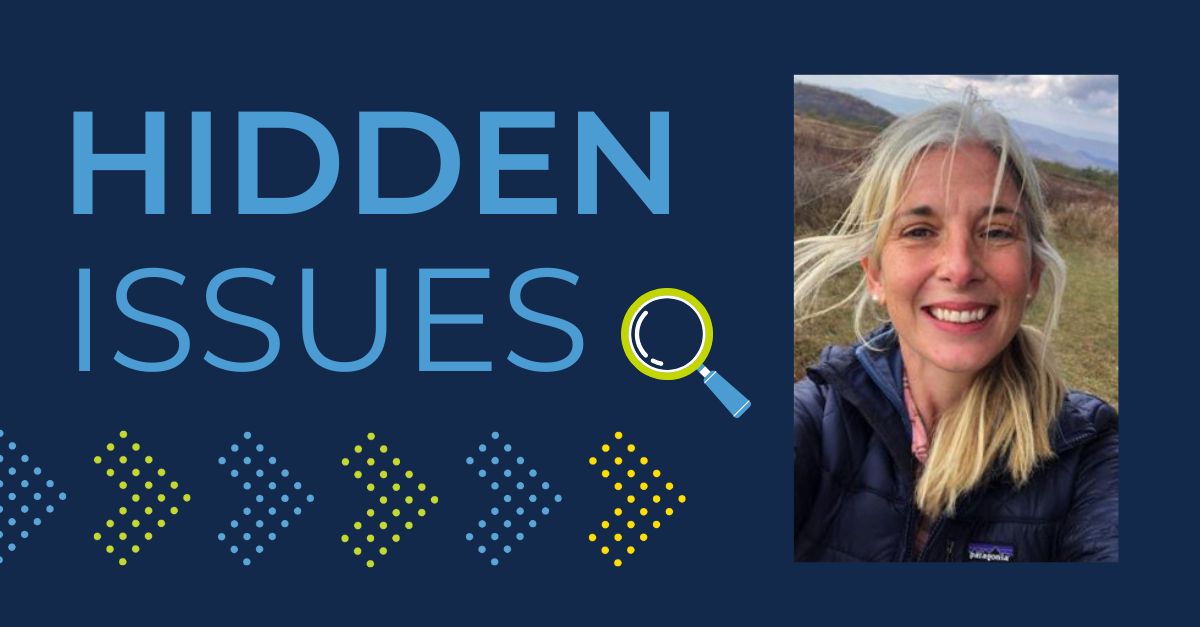Balancing Act: Navigating Water Challenges and Financing in North Carolina's Local Communities
This story is part of a series called “Hidden Issues,” in which we explore how the School of Government addresses lesser-known issues in local government through its research and advising.
Failing infrastructure, storms and floods, lead pipes, and pollution are just some of the tough challenges local governments in North Carolina must address when managing wastewater and providing clean drinking water to their citizens. These issues affect communities across the state, but effects can often be unduly felt in small, rural, and under-resourced communities.
Erin Riggs, the executive director of the UNC School of Government’s Environmental Finance Center, is deeply invested in researching water-related topics. Her passion for water protection was fueled by growing up near a lake in Florida. She focused on environmental advocacy during law school and later worked with environmental non-profits on water pollution and nutrient issues in North Carolina. However, she recognized the critical aspect missing from many conversations about water conservation and services—financing and who would bear the costs. Whether it’s cleaning up pollution or upgrading infrastructure, many local governments face a huge burden financially.
“I don’t think people realize how much water and wastewater infrastructure costs,” said Riggs. “Rates in the water utility world have been so artificially low for so long that to try to establish the ‘true cost’ of water at this point feels completely unfeasible for many systems in the state.”
Water and wastewater utilities also grapple with issues like failing infrastructure which leads to water losses. “Nonrevenue water is water that is lost before it gets to the other end. So, as a utility, I may treat 500 gallons, but with failing infrastructure, I could end up losing 100 gallons which never gets to the home where it is used and thus billed. So, when I bill for my water, I get revenue for 400 gallons, but I’m paying to treat 500,” said Riggs. “This is a huge issue and can cause an immense financial burden for the utility.”
PFAS/PFOAS (or “forever chemicals”) are an emerging contaminant issue that pose a challenge for water utilities across the state to test for and treat due to high expenses and the high capacity needed to address the issue. “We all agree we want safe drinking water,” says Riggs. “But I don’t think people understand why that’s not happening everywhere. Many local government-run utilities don’t have the resources they need to do this.”
The government's role in ensuring clean water is multi-faceted. At the state level, government acts as a regulator, enforcing compliance with the Clean Water Act and Safe Drinking Water Act. State agencies set discharge limits and approve permits for infrastructure expansion, impacting local government's growth and development. Additionally, the state provides funding for water and wastewater infrastructure to local governments to support access to clean water and sanitation services.
Most water and wastewater systems in North Carolina are owned and operated by local governments.
“On the local level, the government must figure out how to pay for water and sanitation in ways that allow them to keep the infrastructure functional, and that allow them to maintain their regulatory requirements. They have to do this in a way that accounts for population changes and in ways that their community members can afford,” said Riggs.
“This is an incredibly challenging process involving identification of future sources of water or wastewater discharge where there are growing populations, as well as constant inventorying of assets and planning for capital upgrades and repairs,” said Riggs. Local governments must also consider the revenue these services generate, the affordability of the rates they charge, and the quality of service they provide for these essential public goods.
The Environmental Finance Center (EFC) provides assistance at both the state and local levels.
At the state level, EFC helps the Division of Water Infrastructure think of ways to implement its programs in ways that have the biggest impact. “We’ve worked with them to assess the prioritization criteria they use to award principal forgiveness or to prioritize stormwater projects, both of which are critical areas,” said Riggs.
EFC also compiles a dashboard out of water, wastewater, and stormwater data from around the state which provides a valuable resource for local governments to utilize for financial benchmarking. Also at the local level, EFC helps utility systems evaluate their financial health and adjust rates to improve affordability and pay for infrastructure investments and support their own operations. EFC also assists in creating interlocal agreements for water or wastewater, and in answering questions related to governance.
“When we talk about water and wastewater services, we need long-term sustainable financing that requires rates to be affordable but also covers all the costs that go with running those utilities.” Riggs admits that finding sustainable solutions to these water issues remains elusive, particularly for populations that cannot afford the costs. “To find sustainable solutions to remedy the problems, create lasting water and sanitation services, and to do so into the future for a population who simply can’t afford any of it, is a problem that I haven’t seen an answer for. That is why I continue in this position, and why I love what I do.”
Published August 18, 2023



